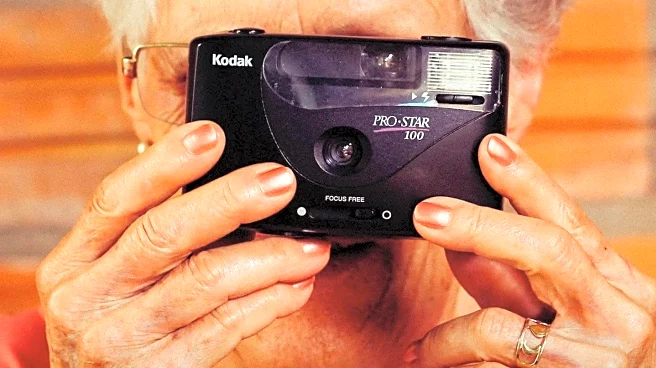What's Happening?
A recent study conducted by Harvard and Mass General Brigham has found that older women who achieve 4,000 steps one or two days per week experience a significant reduction in mortality and cardiovascular
disease risk. The research involved 13,547 women, aged approximately 71.8 years, who were monitored over a decade. Participants wore accelerometers to track their steps, and the study revealed that those reaching the 4,000-step threshold had a 26% lower mortality risk and a 27% lower cardiovascular disease risk compared to those who did not. The study emphasizes the importance of total step volume rather than frequency, suggesting that sporadic activity can be as beneficial as consistent daily steps.
Why It's Important?
This study highlights the potential for simple, achievable physical activity goals to improve health outcomes among older adults, particularly in the U.S. where sedentary lifestyles are prevalent. By identifying a feasible target of 4,000 steps, the research provides a realistic benchmark for public health guidelines, potentially influencing future recommendations. The findings could lead to increased awareness and adoption of step count metrics in physical activity guidelines, promoting better health and longevity among older populations. This could also reduce healthcare costs associated with treating cardiovascular diseases and other age-related health issues.
What's Next?
The researchers plan to explore whether similar health benefits can be achieved with even lower step counts, potentially broadening the applicability of their findings. Additionally, they aim to investigate the effects in more diverse populations beyond older, predominantly white women. The study's authors hope to see step count metrics included in the upcoming 2028 U.S. Physical Activity Guidelines, which could further encourage older adults to engage in regular physical activity, thereby improving public health outcomes nationwide.
Beyond the Headlines
The study raises questions about the role of technology in promoting physical activity, as wearable devices like accelerometers become more common. It also touches on the cultural shift needed to prioritize movement in daily life, especially for older adults who may face barriers to physical activity. The research could inspire initiatives to integrate step tracking into healthcare practices, encouraging patients to monitor and increase their activity levels as part of routine health management.











